
USS Shoshone (AKA-65) was a Tolland-class attack cargo ship of the United States Navy, named after a river in Wyoming. She was designed to carry military cargo and landing craft, and to use the latter to land weapons, supplies, and Marines on enemy shores during amphibious operations. USS Shoshone served as a commissioned ship for 21 months.

USS Southampton (AKA-66) was a Tolland-class attack cargo ship in service with the United States Navy from 1944 to 1946. She was sold into commercial service and scrapped in 1971.

USS Highlands (APA-119) was a Haskell-class attack transport built and used by the US Navy in World War II. She was a Victory ship design, VC2-S-AP5. She was named after Highlands County, Florida, United States.
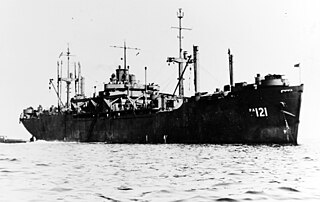
USS Hocking (APA-121) was a Haskell-class attack transport in service with the United States Navy. from 1944 to 1946. She was scrapped in 1974.
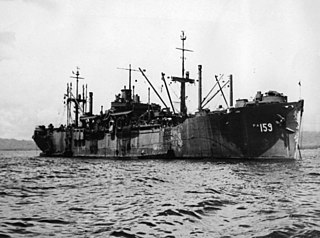
USS Darke (APA-159) was a Haskell-class attack transport in service with the United States Navy in from 1944 to 1946. She was scrapped in 1974.

USS Logan (APA-196) was a Haskell-class attack transport of the United States Navy, named for counties in Colorado, Illinois, Kansas, Kentucky, Ohio, Oklahoma, Nebraska, North Dakota, and West Virginia. The Haskell-class design, United States Maritime Commission standard type VC2-S-AP5, is a sub type of the World War II Victory ship design.

USS Grafton (APA-109) was a Bayfield-class attack transport which served with the United States Navy from 1945 to 1946. She was sold into commercial service in 1947 and was scrapped in 1975.

USS Guilford (APA-112) was a Bayfield-class attack transport in service with the United States Navy from 1945 to 1946. She was sold into commercial service in 1947 and was scrapped in 1976.

USS Beckham (APA-133) was a Haskell-class attack transport in service with the United States Navy from 1944 to 1946. She was scrapped in 1974.

USS Lowndes (APA/LPA-154) was a Haskell-class attack transport in service with the United States Navy from 1944 to 1946. She was scrapped in 1983.

USS Karnes (APA-175) was a Haskell-class attack transport acquired by the U.S. Navy during World War II for the task of transporting troops to and from combat areas.
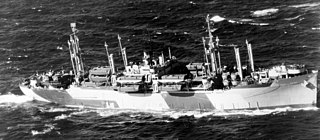
USS Lubbock (APA-197) was a Haskell-class attack transport in service with the United States Navy from 1944 to 1946. She was scrapped in 1975.

USS Barnstable (APA-93) was a Bayfield-class attack transport in service with the United States Navy from 1944 to 1946. She was sold to commercial service in 1948 and finally scrapped in 1974.

USS Goshen (APA-108) was a Bayfield class attack transport in service with the United States Navy from 1944 to 1946. She was sold into commercial service in 1947 and was scrapped in 1973.

USS Hansford (APA-106) was a Bayfield-class attack transport that served with the US Navy during World War II.

USS Knox (APA-46) was a Bayfield-class attack transport in service with the United States Navy from 1944 to 1946. in 1947, she was sold into commercial service and was finally scrapped in 1971.

USS Carteret (APA-70) was a Gilliam-class attack transport that served with the United States Navy from 1944 to 1946. She was sunk as a target in 1948.
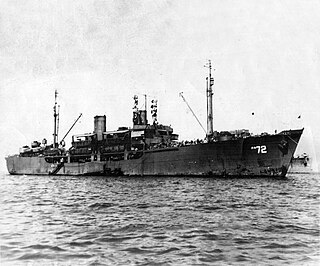
USS Clarendon (APA-72) was a Gilliam-class attack transport that served with the United States Navy from 1944 to 1946. She was scrapped in 1964.
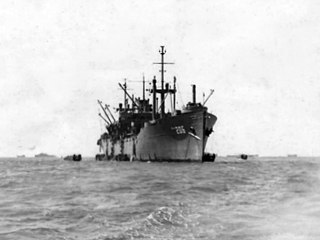
USS Sibley (APA-206) was a Haskell-class attack transport in service with the United States Navy from 1944 to 1946. She was scrapped in 1975.

USS Sevier (APA-233) was a Haskell-class attack transport in service with the United States Navy from 1944 to 1947. She was scrapped in 1980.




















